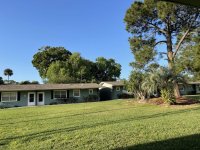not needed for home use, just pointing out that the picture was idealized since he was trying to understand why control channel 149 was giving higher throughput.
OK, I also wanted to mention that I had given him the suggestions and mention that I had forgotten to tell him to check the more advanced details. Anyway, I'm glad he's getting his speeds now, and is happy with the router.
I on the other hand have started to wonder if WiFi 6 is a bunch of hype based on some of my own experiences and what I've read. Let me provide examples of why I'm having this thought process:
I typically don't use WiFi for anything but my iPhone, iPad, and smart home devices, be it Google speakers, Amazon speakers, or smart plugs / bulbs.
Anyway, I have a late 2013, 13" MacBook Pro, that's pretty much been retired, other than for occasional testing of various types. Anyway, at the end of April, I upgraded to Spectrum's internet Gig package from the 400 Mbps package I had, because I wanted to see if it actually made a long term difference, and the price was right finally.
Anyway, my main test device is my late 2015, 27" iMac which is hard wired by Gigabit Ethernet, that goes to a gig switch and then into the router. I do it this way vs directly running to the router to cut down on long cable runs, and it's cleaner, plus when changing routers, it only means there are two cables to unplug and plug back in, the switch and connection to the modem.
With the initial details out of the way; whenever I run a Speedtest from the MacBook, using the native Speedtest app that Okkla provides, I can get up to 930 Mbps down, and of course my 40 Mbps upload. The MacBook Pro is 1st generation WiFi 5, I think it's either 1200, or 1300. Anyway, with my iPhone 12 Pro Max, it's officially Wifi 6 supported, and I only get into the 800's download. Now, granted, that's probably because it's a phone vs computer and the components are smaller and lower powered. It just makes me question the integrity of the marketing, and how reliable and trustworthy the info coming from these forums and tech news is when I personally see an older device perform better than a new one, and the older device existed before the newer standards.
Now, granted, I don't think my older AC only routers could get the MacBook Pro so high up on the scale of speed, but it's not using AX on the newer routers either.
Also note, that currently Apple devices do NOT support 160 Mhz, they are capped at 80. I think it's because of the chipsets used, rather than it being specifically related to Apple. At least that was the impression I had after reading several sources.
When I had the 400 Mbps plan, it really didn't seem to matter what router I used, they all worked about the same. It was after getting gigabit that I noticed the more random results over wireless. Wired, is consistent.
One final thought, the Wifi 6 routers were consistent with speeds between the TP-Link, and Asus models. I never tried the C4000 as the main router again after disconnecting it.





